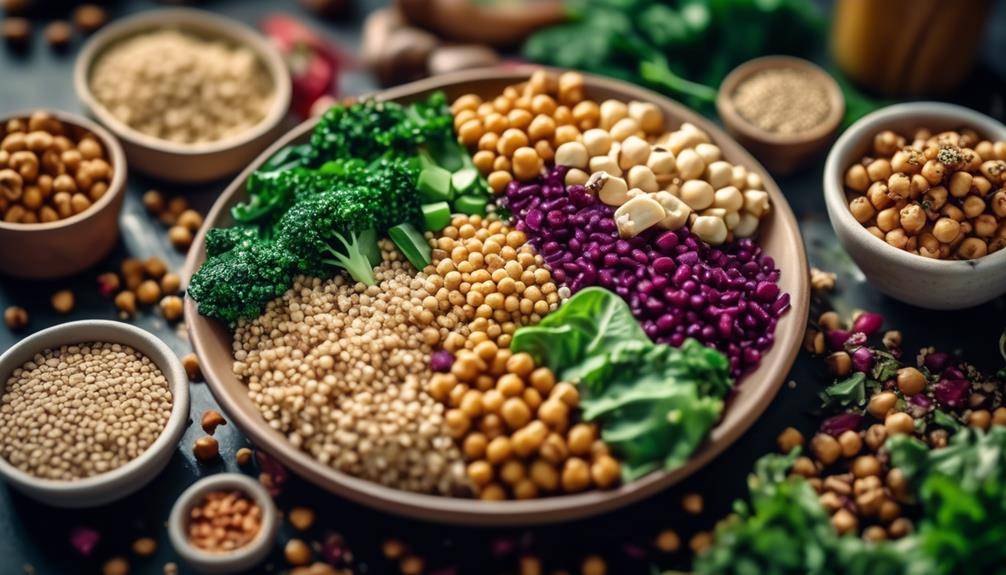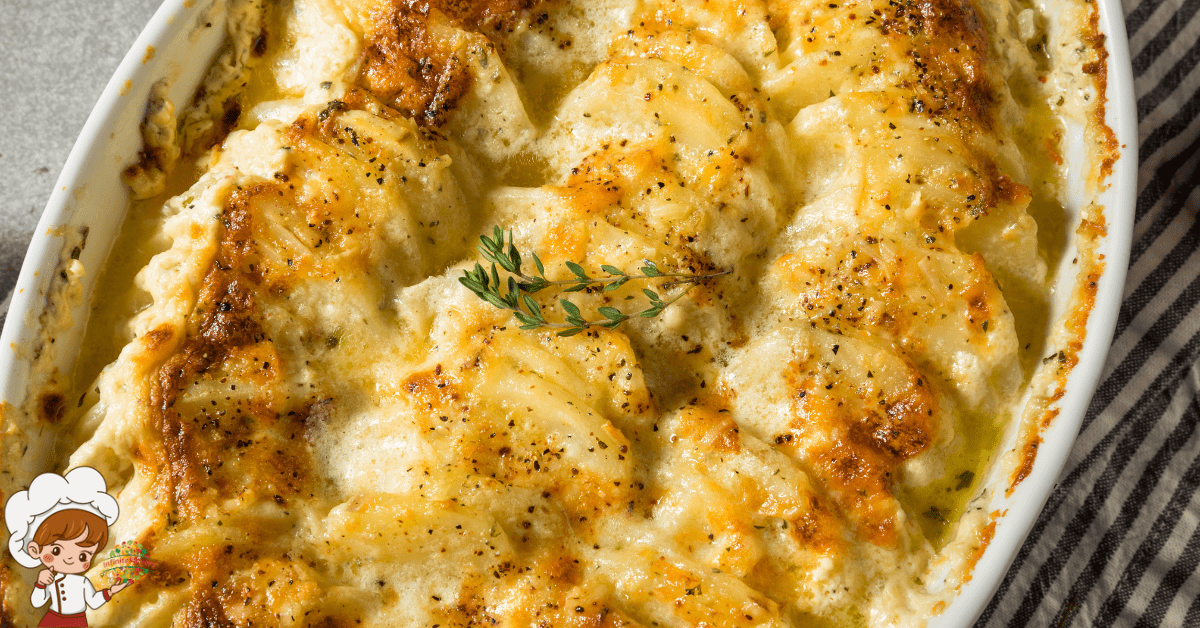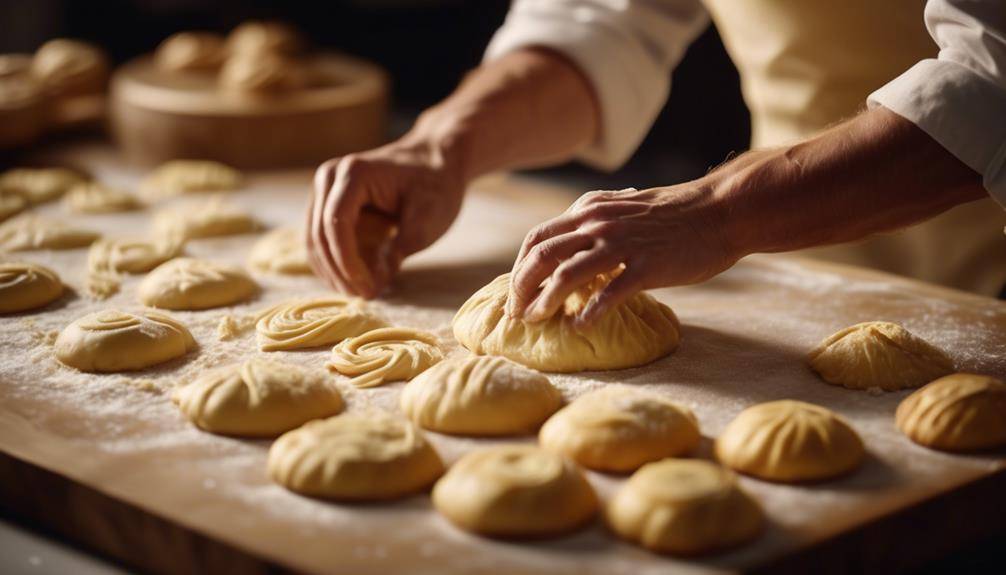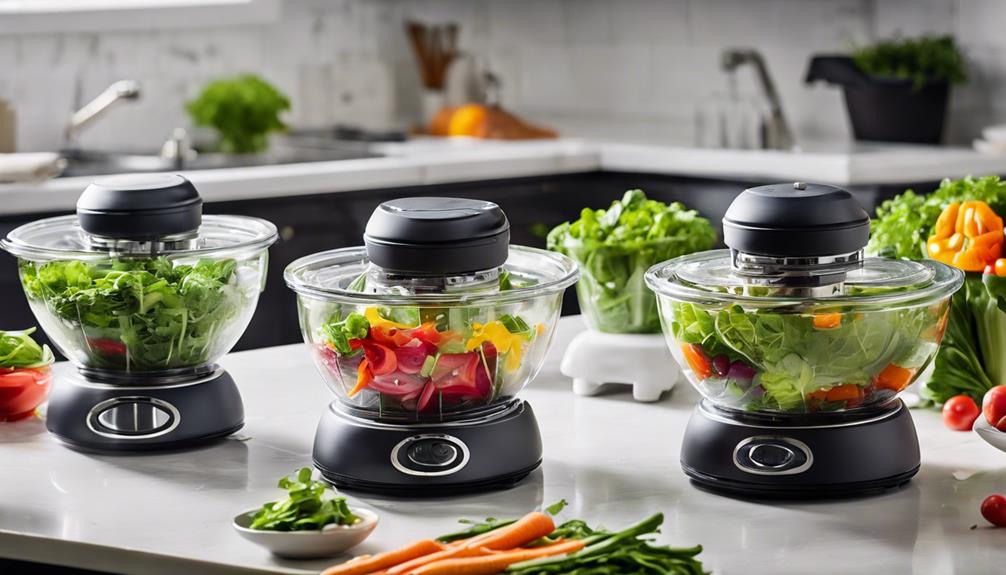Amazing Unique Caribbean Dessert Recipes

Amazing Unique Caribbean Dessert Recipes; Looking for unique Caribbean dessert recipes? You’ll love the creamy Coconut Cream Pie and rich Rum Cake that boast tropical flavors. Try the vibrant Guava Cheesecake for a colorful twist on a classic, or indulge in sweet and chewy Coconut Macaroons. If you desire something invigorating, the Mango Sorbet or Soursop Sorbet will cool you down. Don’t forget the delightful Banana Fritters or the tart Key Lime Pie for a zesty finish. Each dessert captures the essence of the Caribbean, inviting you to enjoy every bite. Stick around, and you’ll discover even more delicious options to try!
Coconut Cream Pie
Coconut cream pie is a tropical delight that’s sure to elevate any dessert table. You’ll love how the creamy coconut filling melts in your mouth while the flaky crust adds a perfect crunch. Making it is easier than you might think, and you can customize it with various coconut variations to suit your taste.
Start by preparing your crust, whether you opt for a traditional pie crust or a graham cracker base. The crispiness of the crust complements the luscious filling beautifully. For the filling, mix together coconut milk, sugar, and cornstarch for a silky texture. Don’t forget to add shredded coconut for that extra depth of flavor. As you cook the mixture, stir continuously until it thickens, then let it cool before pouring it into the crust.
Once your pie is set, it’s time to get creative with tropical toppings. Whipped cream is a classic choice, but consider adding toasted coconut flakes or even pineapple chunks for a fruity twist. A sprinkle of macadamia nuts can add a delightful crunch, too. If you’re feeling adventurous, drizzle a little passion fruit puree on top for a burst of tartness that contrasts beautifully with the sweetness of the cream.
Coconut cream pie isn’t just a dessert; it’s an experience that transports you straight to the tropics. So, why not whip one up for your next gathering? You’ll impress your friends and family with this delicious treat!
Rum Cake
Rum cake is a delightful Caribbean treat that brings a burst of flavor to any occasion. You’ll want to gather the right ingredients and master some key baking techniques to achieve the perfect texture and taste. Let’s explore what goes into this delicious cake and how to make it truly special.
Ingredients for Rum Cake
When it comes to baking a classic Caribbean rum cake, gathering the right ingredients is essential for achieving that rich, moist texture and deep flavor. Start with high-quality rum, as different rum varieties can greatly enhance your cake’s taste. Dark rum is often preferred for its robust flavor, but you can also mix in a bit of spiced rum for added complexity.
Next, you’ll need all-purpose flour, sugar, eggs, and baking powder to create the base of your cake. Incorporate ground nuts—like walnuts or pecans—along with dried fruit such as raisins or currants for extra moisture and sweetness. Don’t forget to add vanilla extract and a pinch of salt to elevate the overall flavor.
To guarantee your rum cake stays fresh, proper cake storage is vital. Once baked, let it cool completely before wrapping it tightly in plastic wrap and storing it in an airtight container. You can also soak the cake periodically with more rum to maintain its moisture and flavor over time. By selecting the right ingredients and storing your cake properly, you’ll create a delightful dessert that captures the essence of the Caribbean.
Baking Tips and Techniques
To achieve a perfectly baked rum cake, pay close attention to your mixing techniques and baking times. Start by creaming your butter and sugar until light and fluffy; this aerates the batter, giving your cake a lovely texture. Avoid over-mixing once you add the eggs and dry ingredients, as this can lead to a dense cake.
Next, verify your oven temperature is accurate. Preheat your oven to 325°F (163°C) before you put the cake in. An oven thermometer can help you confirm the temperature, preventing any surprises. Bake the rum cake for about 50 to 60 minutes, but keep an eye on it in the last few minutes. A toothpick inserted into the center should come out clean or with just a few crumbs.
After baking, let the cake cool in the pan for about 15 minutes before transferring it to a wire rack. This step helps prevent it from breaking. Once cooled, drizzle it with a generous amount of rum syrup for that signature flavor. Follow these tips, and you’ll create a moist, delicious rum cake that’ll impress everyone!
Pineapple Upside-Down Cake
Indulge in the tropical flavors of a Pineapple Upside-Down Cake, a classic dessert that’s both visually stunning and deliciously sweet. This cake has a rich history that dates back to the early 20th century, when it first gained popularity in America. Bakers embraced the idea of caramelizing fruit, transforming simple ingredients into a show-stopping centerpiece.
To make your own Pineapple Upside-Down Cake, start with a buttery brown sugar base, topped with juicy pineapple rings and maraschino cherries. As the cake bakes, the fruit caramelizes, creating a delightful syrup that soaks into the cake layers. When you flip it over, you’ll reveal a beautiful, golden topping that’s sure to impress your guests.
You can also explore tropical variations of this classic recipe. Consider using mango, papaya, or even coconut to give your cake a unique twist. Each fruit brings its own flavor profile, allowing you to customize your dessert to suit any occasion. Whether you’re hosting a summer barbecue or celebrating a special occasion, this cake is sure to be a hit.
Don’t forget to serve it warm with a scoop of vanilla ice cream or a dollop of whipped cream for an extra touch of decadence. With every bite, you’ll taste the essence of the Caribbean, making your Pineapple Upside-Down Cake not just a dessert, but a delightful experience that transports you to a tropical paradise.
Mango Sorbet
When you’re ready to whip up some invigorating mango sorbet, picking the right mango is key to achieving that perfect flavor. You’ll want to follow some simple preparation steps to get the texture just right. Plus, I’ll share creative serving suggestions that’ll impress your guests and elevate your dessert game!
Fresh Mango Selection Tips
Selecting the perfect mango is essential for making a delicious mango sorbet. Start by exploring different mango varieties, like Haden, Tommy Atkins, or Ataulfo, each offering unique flavor profiles. Look for ripeness indicators such as a slight softness when gently pressed and a fragrant aroma. A ripe mango will yield sweet, juicy flesh that’s ideal for your sorbet.
Consider the seasonal availability of mangoes, as they peak from late spring to early summer in many regions. Fresh mangoes can enhance your dessert inspiration with their tropical accents. When it comes to storage methods, keep unripe mangoes at room temperature until they ripen, then transfer them to the fridge to prolong their vitality for a few days.
Incorporating mango into your recipes not only elevates flavor but also boasts health benefits like vitamins A and C. Think about pairing your mango sorbet with coconut or lime for a revitalizing twist. With these tips, you’ll select the best mango for your sorbet, ensuring a delightful and healthy dessert that captures the essence of the Caribbean.
Simple Sorbet Preparation Steps
Making mango sorbet is a straightforward and rewarding process that can invigorate any dessert table. To get started, you’ll need ripe mangoes, sugar, and lime juice. Begin by peeling and chopping the mangoes into small pieces. Aim for about four cups of mango chunks to create a rich fruit base.
Next, blend the mango pieces in a food processor until smooth. You can adjust the sweetness by adding sugar to taste, along with a splash of lime juice for some zesty contrast. This mixture will serve as the foundation for your sorbet flavors.
Once combined, pour the mixture into a shallow dish and place it in your freezer. Every 30 minutes, stir the mixture with a fork to break up any ice crystals. Continue this process for about 3 to 4 hours, or until it reaches a fluffy, sorbet-like consistency.
Once it’s ready, scoop it into bowls, and enjoy the revitalizing taste of homemade mango sorbet! With just a few simple steps, you’ve created a delightful dessert that highlights the natural sweetness of mangoes and elevates your summer gatherings.
Creative Serving Suggestions
There are countless ways to elevate your mango sorbet presentation and impress your guests. Start with tropical plating by serving the sorbet in creative dishware like coconut shells or hollowed-out pineapples. This instantly adds an island flair to your dessert. Enhance the visual appeal with colorful fruit arrangements—think sliced kiwi, strawberries, and passion fruit drizzled around your sorbet.
Don’t forget dessert garnishes! A sprinkle of toasted coconut or a few mint leaves can provide that extra pop. Consider island-inspired toppings like a drizzle of honey or a splash of rum for an adult twist. For a festive presentation, incorporate seasonal ingredients like fresh berries or mango slices that reflect the Caribbean vibe.
To really wow your guests, create thematic table settings that resonate with cultural influences of the Caribbean. Pair your mango sorbet with complementary flavors, such as coconut or lime, to enhance the overall experience. By thoughtfully combining these elements, you’ll not only serve a delicious dessert but also an unforgettable visual treat that embodies the spirit of the islands.
Guava Cheesecake
While you may think of cheesecake as a classic dessert, adding guava transforms it into a tropical delight that’s sure to impress. Guava varieties, especially the sweet pink and yellow ones, bring a unique flavor that pairs beautifully with the creamy texture of traditional cheesecake. You’ll find that this exotic fruit not only enhances the taste but also adds a stunning color that makes your dessert visually appealing.
To make guava cheesecake, start by preparing your crust. A classic graham cracker crust works well, but you can experiment with coconut or even crushed cookies for a Caribbean twist. Next, blend cream cheese with pureed guava to create that luscious filling. Don’t forget to sweeten it with sugar or honey, depending on your taste preferences.
Once your cheesecake is baked and cooled, you can get creative with cheesecake toppings. A drizzle of guava sauce made from fresh fruit and sugar can elevate your dessert to the next level. You might also consider adding a sprinkle of toasted coconut or a dollop of whipped cream for added texture and flavor.
When serving, slice your guava cheesecake into generous portions, and watch as your guests delight in this tropical twist on a beloved classic. This dessert isn’t just a treat; it’s a conversation starter, bringing the essence of the Caribbean right to your table.
Sweet Potato Pudding
Sweet potato pudding is a delightful treat that showcases the rich flavors of the Caribbean. You’ll need a few key ingredients, and mastering the baking techniques can elevate your dish to new heights. Let’s explore what you’ll need and how to achieve that perfect texture and taste.
Ingredients for Sweet Potato
Often enjoyed at festive gatherings, the ingredients for a delightful Sweet Potato Pudding come together to create a dish that’s both comforting and rich in flavor. To get started, you’ll need about two cups of mashed sweet potatoes, which are not just delicious but also packed with sweet potato benefits like high fiber and vitamins A and C. You can choose from various sweet potato varieties, such as the orange-fleshed or purple varieties, each adding a unique taste and color to your pudding.
Next, gather one cup of coconut milk for creaminess, along with half a cup of sugar to sweeten things up. Don’t forget the spices! You’ll want a teaspoon each of cinnamon and nutmeg, which will elevate the flavor profile. Add in a pinch of salt and about a tablespoon of vanilla extract for added depth.
Baking Techniques Explained
Once you’ve gathered your ingredients for the Sweet Potato Pudding, it’s time to focus on the baking techniques that will bring your dish to life. Start with the mixing methods; blend your sweet potatoes until smooth, then incorporate eggs and milk for a creamy texture. Remember, temperature control is vital—preheat your oven to guarantee even baking.
If you’re short on ingredients, don’t hesitate to make ingredient substitutions, like using coconut milk instead of regular milk for added flavor. Utilize essential baking tools, such as a whisk and a spatula, for even mixing and pouring.
To enhance the flavor, consider adding spices like cinnamon or nutmeg, which can elevate your pudding. Employ layering techniques by alternating layers of pudding with a crumb topping for added texture.
Keep an eye on baking times to avoid overcooking; typically, 45 minutes will do the trick. Once baked, follow proper cooling processes by letting it sit before serving. Finally, think about your presentation styles—serve in individual cups or a beautiful dish to impress your guests. If you encounter issues, use troubleshooting tips to adjust your methods for the next bake. Enjoy your delicious creation!
Black Cake
Have you ever tried a Caribbean black cake? This rich, dense dessert is a staple in many Caribbean households, especially during holidays and celebrations. The cake is often made with a blend of dark rum-soaked fruits, including raisins, currants, and prunes, which not only add flavor but also contribute to its deep, dark color.
Black cake history dates back to the colonial era, influenced by the British fruitcake tradition. However, Caribbean black cake has evolved, incorporating local ingredients and flavors that make it unique. You’ll find that each island has its own black cake variations, with families often passing down secret recipes from generation to generation. Some may add spices like nutmeg and cinnamon, while others might include a touch of molasses for added sweetness.
Making black cake is an art. You’ll start by soaking your dried fruits in rum for at least a few days, if not weeks, before baking. This step is essential, as it allows the flavors to meld beautifully. When you finally mix the soaked fruits into your batter, you’ll notice the rich aroma filling your kitchen.
Once baked, black cake is often covered in marzipan and royal icing, making it a festive centerpiece for any gathering. Whether you enjoy it plain or with a dollop of whipped cream, one bite will transport you to the heart of the Caribbean, celebrating the rich culinary traditions that come with it. So, why not give this delightful dessert a try?
Tropical Fruit Tarts
After enjoying the rich flavors of black cake, you might be ready to explore the lighter side of Caribbean desserts with tropical fruit tarts. These delightful treats showcase the vibrant flavors of the tropics, combining fresh fruits that burst with sweetness and color. You can create the perfect tart by selecting your favorite tropical fruit combinations, such as mango, pineapple, and passion fruit, or even guava and coconut for a unique twist.
When it comes to the tart crust variations, you’ve got plenty of options. A traditional buttery shortcrust is always a favorite, but you can also experiment with a graham cracker crust for added crunch and flavor. For a gluten-free option, try a crust made from ground almonds or shredded coconut. The choice of crust can elevate the overall taste and texture of your tart, making it a personal masterpiece.
Once you’ve chosen your crust, it’s time to fill it with a luscious layer of creamy custard or a light whipping cream. Arrange your fruits artistically on top, and don’t forget to drizzle a bit of honey or a splash of lime juice to enhance the flavors. Tropical fruit tarts are not only visually stunning but also invigoratingly delicious, serving as the perfect ending to any Caribbean meal. So, gather your favorite fruits, get creative with your crust, and indulge in a slice of paradise!
Passion Fruit Mousse
While the vibrant tang of passion fruit captivates your taste buds, a silky passion fruit mousse can elevate your dessert experience to new heights. This luscious treat is not only simple to make but also allows for creative expression through various mousse techniques. You’ll start by whisking fresh passion fruit pulp with cream and sugar, incorporating whipped egg whites for that light, airy texture.
As you explore tropical variations, consider combining passion fruit with coconut or mango for a delightful twist. These flavor pairings enhance the mousse, giving it a revitalizing island vibe. For an elegant touch, think about dessert garnishes like toasted coconut flakes or a drizzle of dark chocolate.
When it comes to serving styles, individual cups or ramekins make for stunning presentations. You might also opt for a large bowl, allowing guests to serve themselves. If you’re looking to accommodate dietary preferences, ingredient substitutions can easily be made. Swap out heavy cream for coconut cream or a healthy alternative like Greek yogurt to lighten up the dish without sacrificing flavor.
If you have guests with dietary restrictions, consider options like dairy-free or vegan substitutes. The beauty of passion fruit mousse lies in its adaptability, inviting you to experiment while keeping that signature tropical essence. Whether it’s a casual gathering or a festive occasion, this dessert will certainly impress and satisfy your cravings for something extraordinary.
Cassava Pudding
Cassava pudding’s rich, unique flavor makes it a must-try dessert. You’ll need a few key ingredients to get started, and I’ll share some handy preparation and cooking tips to guarantee your pudding turns out perfectly. Let’s explore what you’ll need and how to create this delicious treat!
Ingredients for Cassava Pudding
To create a delicious cassava pudding, you’ll need just a handful of key ingredients that come together to deliver rich flavors and a delightful texture. The star of the dish is, of course, cassava, a root vegetable with a fascinating history dating back thousands of years in South America and the Caribbean. This versatile ingredient not only provides the pudding’s base but also offers significant nutritional benefits, including essential vitamins and minerals.
You’ll also need grated coconut, which adds a creamy richness and enhances the tropical essence of the pudding. Sugar will sweeten the mixture, balancing the natural earthiness of cassava. For a hint of warmth, a pinch of nutmeg or cinnamon can elevate the flavor profile. Don’t forget to include eggs to bind the ingredients together and give the pudding its signature texture.
Lastly, a splash of vanilla extract can bring everything together, creating a soothing aroma that will tantalize your taste buds. With these ingredients on hand, you’re ready to begin your cassava pudding adventure, bringing a taste of Caribbean tradition to your table.
Preparation and Cooking Tips
Getting started on your cassava pudding is all about preparation and attention to detail. First, verify you properly grate or process the cassava until it’s fine and even. This step is essential for achieving the right texture. After that, combine it with your other ingredients—like coconut milk, sugar, and spices—mixing thoroughly to guarantee a balanced flavor profile.
When it comes to cooking, preheat your oven to the recommended temperature and grease your baking dish well. Pour in your mixture and bake until it’s set and golden on top. Keep an eye on it to avoid over-baking, which can dry it out.
For dessert presentation, slice the pudding into squares or triangles once it’s cooled. You can serve it warm or chilled, depending on your preference. Don’t forget to think about flavor pairings; a drizzle of fresh coconut cream or a scoop of vanilla ice cream can elevate your cassava pudding to new heights. Adding a sprinkle of nutmeg or cinnamon on top not only enhances the taste but also makes your dish visually appealing. Enjoy your culinary creation!
Coconut Macaroons
Indulging in the sweet, chewy delight of coconut macaroons brings a taste of the Caribbean right to your kitchen. These little bites of heaven are not only simple to make, but they also allow you to explore a world of coconut flavor pairings that can elevate your dessert game. Picture the tropical essence of coconut mingling with chocolate, lime, or even pineapple—each combination crafting a unique twist on the classic macaroon.
To create your own coconut macaroons, you’ll need just a few key ingredients: shredded coconut, egg whites, sugar, and vanilla extract. Start by mixing the shredded coconut with the sugar and vanilla, then fold in the whipped egg whites until everything’s well combined. Scoop the mixture into mounds on a baking sheet and pop them in the oven. You’ll be rewarded with a golden exterior and a soft, chewy center.
If you’re feeling adventurous, consider experimenting with macaron variations. You can dip your macaroons in melted chocolate for a decadent touch or add a sprinkle of sea salt on top for contrast. For a revitalizing twist, try incorporating zesty citrus or spices like cinnamon into the mixture.
Coconut macaroons are a versatile dessert that captures the essence of the Caribbean, bringing warmth and joy to any occasion. So go ahead, whip up a batch, and let the flavors transport you to a tropical paradise.
Banana Fritter
After enjoying the chewy delight of coconut macaroons, you’ll want to try another Caribbean classic: banana fritters. These golden-brown treats are a perfect blend of sweet and savory, making them a must-try. You can use various banana varieties, but overripe bananas work best since their natural sweetness shines through.
To start, mash a few ripe bananas until smooth. Mix in flour, a sprinkle of sugar, a pinch of salt, and a dash of cinnamon for flavor. You might even consider adding a splash of vanilla extract or a hint of nutmeg to elevate your fritters. Once your batter is ready, it’s time to focus on your frying techniques. Heat a generous amount of oil in a deep pan over medium heat. You want enough oil to submerge the fritters halfway for that perfect, crispy exterior.
Using a spoon, drop dollops of the banana mixture into the hot oil, ensuring not to overcrowd the pan. Fry them until they’re golden brown, usually about 2-3 minutes per side. Once they’re done, let them drain on paper towels to remove excess oil.
Serve your banana fritters warm, dusted with powdered sugar or drizzled with honey for an extra touch of sweetness. They make for a delightful snack or dessert, capturing the essence of Caribbean flavors in each bite. Enjoy this treat with friends or family, and you’ll have everyone asking for more!
Soursop Sorbet
Soursop sorbet is a revitalizing Caribbean treat that perfectly captures the tropical essence of the islands. This delicious dessert isn’t just a sweet indulgence; it also boasts numerous soursop health benefits. Rich in vitamins C and B, soursop can boost your immune system and provide essential nutrients. Plus, it’s packed with antioxidants that may help combat oxidative stress in your body.
If you’re looking to make your own soursop sorbet, knowing a bit about soursop cultivation tips can be incredibly advantageous. Soursop trees thrive in warm, tropical climates, so if you live in such a region, consider planting one in your garden. To grow healthy soursop fruit, make sure your tree gets plenty of sunlight and consistent watering. Avoid overwatering, as too much can lead to root rot. When harvesting, wait until the fruit is slightly soft to the touch and emits a sweet aroma.
Once you’ve got your fresh soursop, the sorbet-making process is simple. Blend the ripe soursop pulp with a bit of sugar and lime juice for that extra zing. Pour your mixture into a container and freeze it until it reaches a creamy consistency.
Serve your soursop sorbet in chilled bowls, and watch as everyone enjoys this exotic dessert. Not only will you delight in the invigorating taste, but you’ll also savor the health benefits packed into each spoonful. Enjoy the flavors of the Caribbean right at home!
Key Lime Pie
When you think of a quintessential Caribbean dessert, Key Lime Pie often comes to mind. Its tangy filling, creamy texture, and buttery crust make it a favorite among locals and tourists alike. The star of this dish is, of course, the key lime juice, which gives it that signature tartness. But don’t overlook the benefits of lime zest! Adding a bit of zest not only enhances the pie’s flavor but also packs a nutritional punch, offering antioxidants and a boost of vitamin C.
When it comes to pie crust variations, you have plenty of options to customize your dessert. While a traditional graham cracker crust is popular, you might want to try a coconut crust for a tropical twist. It adds a delightful crunch and complements the lime flavor beautifully. You could even experiment with an almond or chocolate crust if you’re feeling adventurous!
As you prepare your Key Lime Pie, remember to balance the sweetness and tartness to suit your taste. Whipping up some fresh whipped cream for the topping adds a lightness that pairs perfectly with the dense filling. Serve it chilled, and you’ll have a dessert that embodies the essence of the Caribbean.
Chocolate Covered Bananas
There’s something undeniably delightful about chocolate covered bananas, making them a popular treat in the Caribbean. This simple yet indulgent dessert combines the natural sweetness of bananas with rich chocolate, creating a perfect balance. You can easily make this at home, and the best part? You can customize it to suit your taste!
Start by selecting your banana variations. You can use ripe, yellow bananas, or try frozen bananas for a revitalizing twist. Peel and slice them into bite-sized pieces or leave them whole for a more decadent treat. Melt your favorite chocolate—dark, milk, or even white chocolate works beautifully. Dip the banana pieces into the melted chocolate, ensuring they’re well-coated, then let any excess chocolate drip off.
Now, here’s where the fun begins: adding tropical toppings! Sprinkle shredded coconut, crushed nuts, or colorful sprinkles on top of the chocolate-covered bananas. You might even want to drizzle some caramel or peanut butter over them for an extra layer of flavor. Once decorated, place them on a parchment-lined tray and let them cool in the fridge until the chocolate hardens.
These chocolate covered bananas are not only a delicious dessert but also a fantastic way to enjoy a taste of the Caribbean. Whether you’re hosting a gathering or just treating yourself, they’re sure to impress. So go ahead, grab some bananas, and release your creativity with this delightful treat!
Frequently Asked Questions: Amazing Unique Caribbean Dessert Recipes
What Are the Best Toppings for Caribbean Desserts?
When you think about the best toppings for Caribbean desserts, consider vibrant tropical fruit toppings like mango and pineapple. Adding luscious coconut cream drizzles elevates the flavors, making every bite a delightful island experience.
Can I Substitute Ingredients in These Recipes?
Yes, you can substitute ingredients in these recipes. Ingredient swaps can maintain texture, while flavor enhancements bring new depth. Don’t hesitate to experiment; it’s a great way to personalize your dessert to your taste!
How Can I Make Desserts Healthier?
To make desserts healthier, you can use healthy sweeteners like honey or maple syrup instead of sugar. Incorporating fruit alternatives, such as bananas or applesauce, can also enhance flavor while reducing calories and adding nutrients.
Are There Vegan Options for These Desserts?
Yes, you can definitely find vegan options! By using vegan substitutions like coconut milk or avocado, and incorporating tropical fruits such as mango or pineapple, you can create delicious, plant-based desserts that everyone will love.
What Drinks Pair Well With Caribbean Desserts?
When pairing drinks with Caribbean desserts, consider tropical fruit pairings like mango or pineapple. Rum infused beverages also complement the flavors wonderfully, enhancing your dessert experience and bringing out the vibrant essence of the Caribbean.
Conclusion
You’ve now got a taste of the Caribbean with these unique dessert recipes! Each one offers a delightful blend of flavors that’ll transport you to sun-soaked beaches. Whether you’re whipping up a creamy Coconut Cream Pie or enjoying a invigorating Mango Sorbet, these treats are sure to impress. So, gather your ingredients, get creative in the kitchen, and share these delicious desserts with friends and family. They’ll love the tropical twist you bring to the table!








